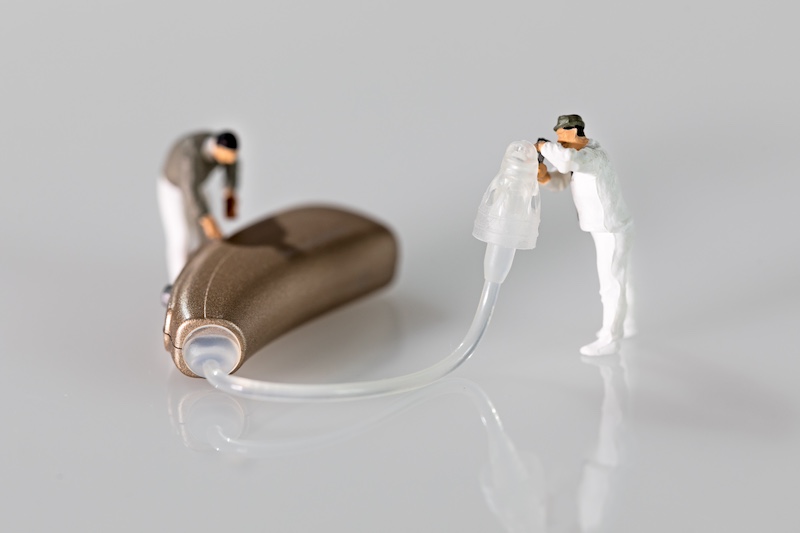Spring on the hearing aid maintenance tips
Let’s face it, allergy season is too hard on too many of our senses – and in a season budding with sensory experiences, hearing aid maintenance will be the only spring cleaning that promises to keep at least one of our faculties flowing freely.

Like any lifeline, hearing aids require regular care and maintenance to ensure optimal performance and longevity. As Hearing Instrument Practitioners (HIPs), it’s imperative to be well-versed in recognizing and addressing common challenges that wearers may encounter with their hearing aids, arming them with the best strategies to match pitch with this juncture of rejuvenation.
That said, from correcting connectivity issues interrupted by outdoor pursuits to moisture management, ‘tis the season to review all the insights and solutions around hearing aid maintenance for both practitioners and patients alike.
Take your deep cleanse to the root and clear the earwax buildup
One of the most prevalent issues in hearing aid maintenance is earwax buildup, which can accumulate in the device’s receiver or microphone ports and lead to muffled sound or complete malfunction.
To combat the congestion, educate your clients on proper ear hygiene, and advise them to clean their ears regularly. Additionally, teach them how to clean their hearing aids using specialized tools provided by the manufacturer. For extra measure, encourage them to schedule regular check-ups to have their devices professionally cleaned and inspected.
Make hearing aid maintenance a breeze by addressing feedback and whistling
Feedback and whistling noises can occur when the hearing aid‘s microphone picks up sound from its own speaker, resulting in a frustrating auditory experience for the wearer.
Solve the problem at the root, and ensure proper fitting and adjustment of the hearing aids to minimize feedback. Instruct clients on the correct insertion technique to create a tight seal in the ear canal, and consider utilizing feedback cancellation technology or feedback management systems to mitigate any issues.
Shine some sunlight on moisture damage
Moisture is another common adversary of hearing aids, particularly in humid environments or during activities that induce sweat, where exposure to moisture can corrode internal components and lead to malfunctions.
Wearers can evaporate this concern with hearing aid dehumidifiers or drying kits that remove excess moisture overnight. Take it the extra step, and encourage clients to remove their devices before swimming, showering, or engaging in water-related activities. Even better, consider offering waterproof or water-resistant hearing aids for individuals with active lifestyles.
Target the battery to jumpstart hearing aid maintenance
Battery-related problems can significantly impact the functionality of hearing aids, bringing in issues such as improper insertion, expired batteries, or inadequate power supply can disrupt the wearer’s experience.
If spring were a tool, it would be a defibrillator, so urge the patients to pay special attention to the battery health of the hearing aids, and provide thorough instructions on battery resuscitation, handling, and replacement. Include teaching clients how to recognize the signs of low battery, such as decreased volume or intermittent operation. Furthermore, advise them to keep spare batteries on hand and to store them in a cool, dry place away from metal objects.
Crack a window to hear the birds chirp
When 1/5 people are paying for front-row tickets to the Great Hay Fever Hoedown with at least 2/5 of their senses, even our “April Showers Vacation Hours” math says there’s no need for all of our intake branches to suffer a bog down.
As HIPs, our commitment to client satisfaction extends beyond initial fittings to encompass ongoing support and maintenance. Through education, communication, and collaboration, you can provide patients the tools to navigate this maintenance cycle and reap the full benefits of their hearing aids for seasons to come.
Bring the revitalization cycle full circle. Empower your patients to spring forward with confidence and clarity, knowing that with proper hearing aid maintenance, the joys of spring can be fully appreciated.
AHIP is not and shall not be liable for any of the views expressed by the authors or advertisers on the Signal Blogs. The authors’ opinions and the advertisers’ content do not necessarily reflect AHIP’s views.



